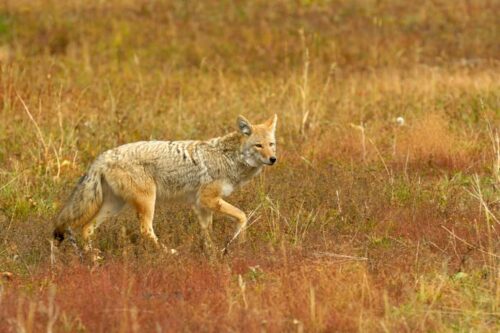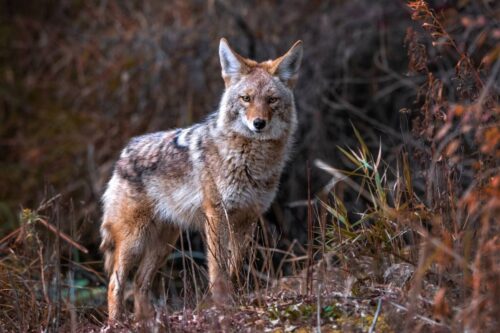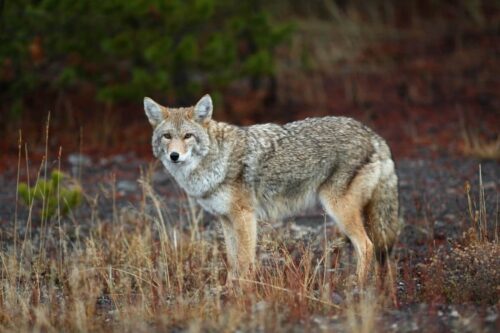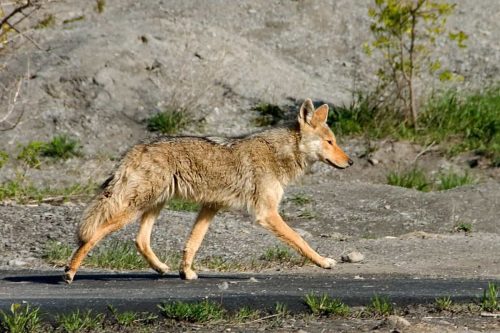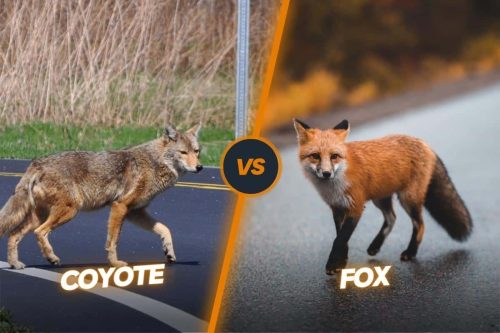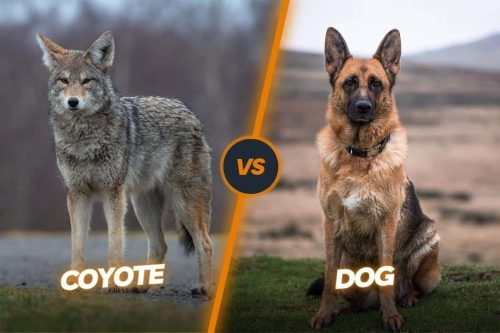Coyotes in Oregon Wild: Unveiling the Lives of Canis latrans
Coyotes are indeed found in Oregon like many other states of the USA. coyotes are most commonly found in the eastern and central parts of the state, where there is more open terrain and agricultural land. However, they can also be found in western Oregon, including suburban and urban areas, as they have adapted to living near humans. Coyotes are actually fairly distributed throughout the state except in the Northwestern side of the state.
Coyotes play an important role in the ecosystem by helping to control rodent populations and serving as a food source for larger predators. Despite being killed on a large scale in the state, coyotes have established a very stable population throughout the state of Oregon and they are continuously growing.
In this article, we are going to explore the presence of coyotes in Oregon in detail and let you know about their social behavior, preferrable habitat, and ecological role in the state.
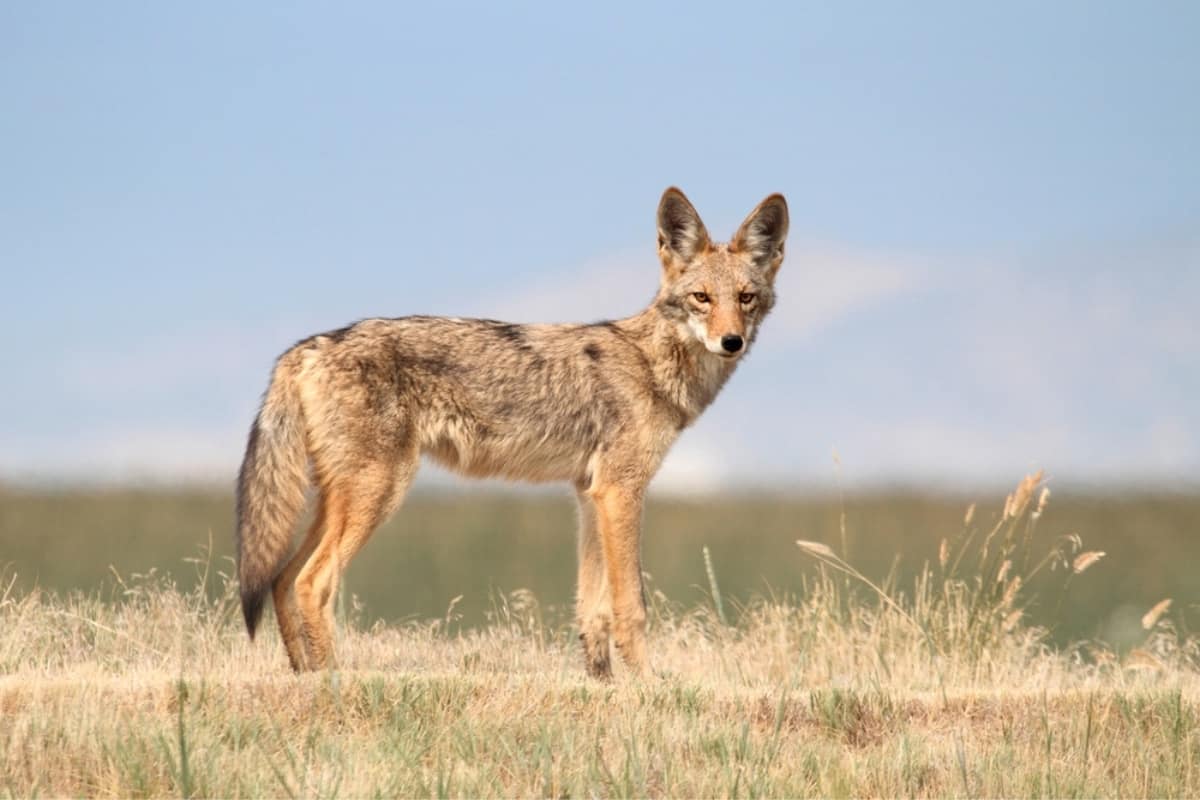
Contents
Historical presence of the coyotes in Oregon
Coyotes are not native to the state of Oregon in the sense that they were historically absent from the region. The historical range of the coyote was primarily in the western and central parts of North America, including areas of the United States such as the Great Plains, the southwestern deserts, and parts of Mexico. However, over the past century, coyotes have significantly expanded their range, including into Oregon.
Coyotes’ historical presence in Oregon is intertwined with the natural history of the region, and their interactions with other species, including other predators like wolves and cougars, have shaped the ecosystem dynamics over time.
It’s worth noting that while coyotes have been present in Oregon for a long time, their distribution and population densities might have fluctuated due to various factors such as habitat changes, human activities, and interactions with other species.
Also read: Are there coyotes in Kentucky?
Reproduction and Family Structure of the Coyotes in Oregon
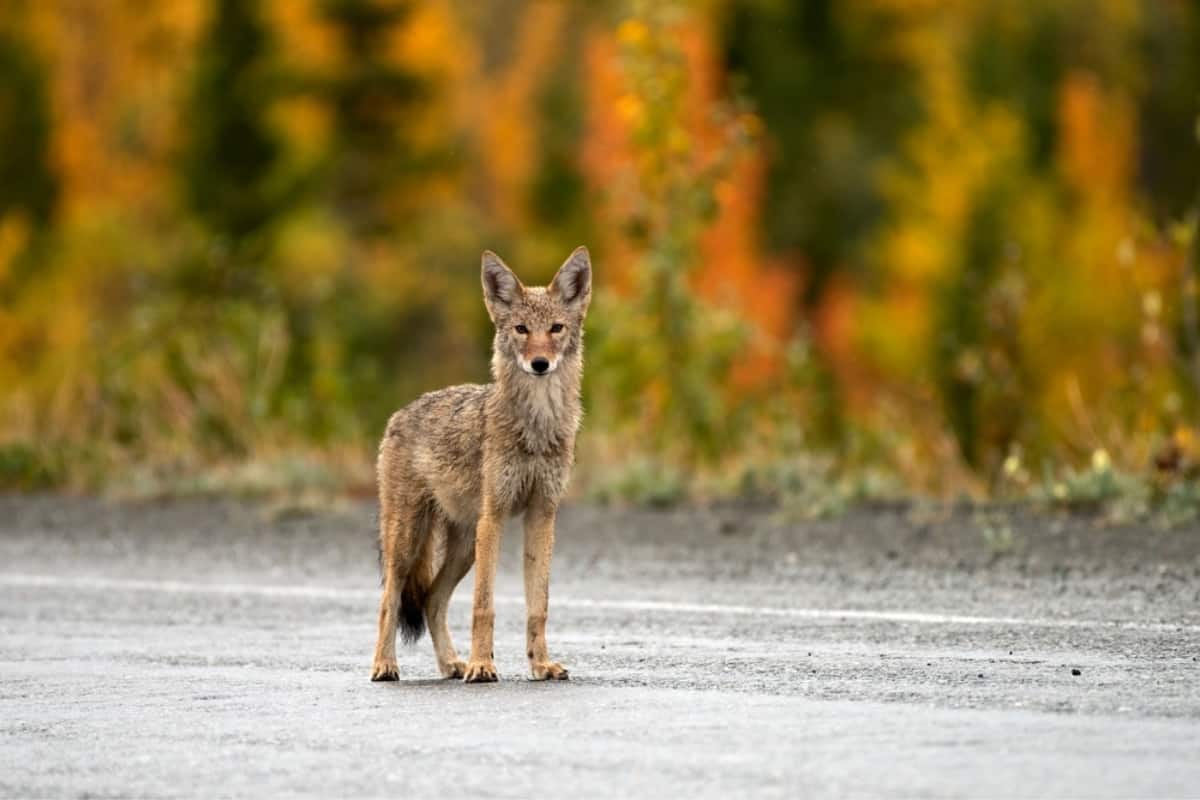
Coyotes in Oregon, like coyotes throughout North America, have a well-defined reproductive and family structure. Coyotes typically have a breeding season in late winter, from January to March. During this time, they become more vocal and active, engaging in behaviors like howling and scent marking to communicate with potential mates.
Coyotes are typically monogamous during the breeding season, with a male and female forming a pair bond. This pair bond is not necessarily long-term, and coyotes may mate with different partners in subsequent breeding seasons. After mating, the female coyote has a gestation period of approximately 63 days.
Female coyotes give birth to their pups in dens. Dens can be located in a variety of places, including hollow logs, burrows, thickets, or even culverts. They may use natural dens or dig their own. The size of a coyote litter can vary but usually ranges from 3 to 12 pups, with the average being around 6 pups.
Coyote pups are born blind and helpless, and they rely entirely on their parents for food and protection. They start to open their eyes and become more mobile at around two weeks of age.
Coyote families typically consist of the breeding pair and their current litter of pups. However, older siblings from previous litters may sometimes stay with the family and help raise the new pups. This can create a more complex family structure.
Coyote Killing Contests in Oregon
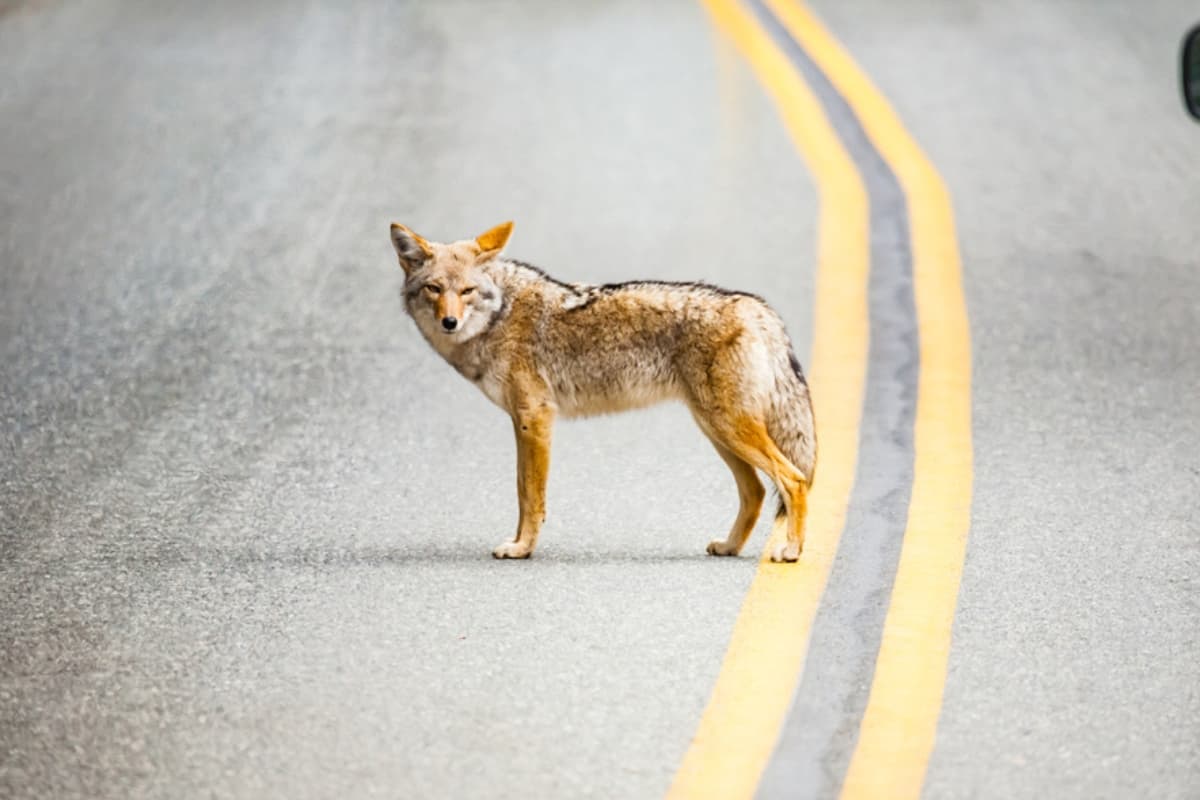
Coyote killing contests, also known as coyote derbies or tournaments, are events where participants compete to kill as many coyotes as possible within a set time frame. These contests have been a source of controversy and debate due to concerns about ethics, animal welfare, and the impact on local ecosystems.
Oregon did not have a statewide ban on coyote killing contests. However, the legality and regulation of such contests can vary by state and locality. Some states have implemented restrictions or bans on these events, while others have not.
These contests regularly happened in Oregon and thousands of coyotes have been killed in these contests. In the Harney county of the state, 300 coyotes were killed in just two days under the garb of these contests. It has been roughly estimated that almost 1,000 coyotes have been killed in the last four years in these contests.
During these events, participants may deploy a variety of methods to lure animals toward them like electronic callers. These wild animals have to suffer gunshot injuries. The resultant carcass is also just wasted in the environment. These contests actually promote vicious violence against innocent wild animals and promote the slogan that killing is fun and the life of wild animals is very cheap.
Living with urban coyotes in Oregon
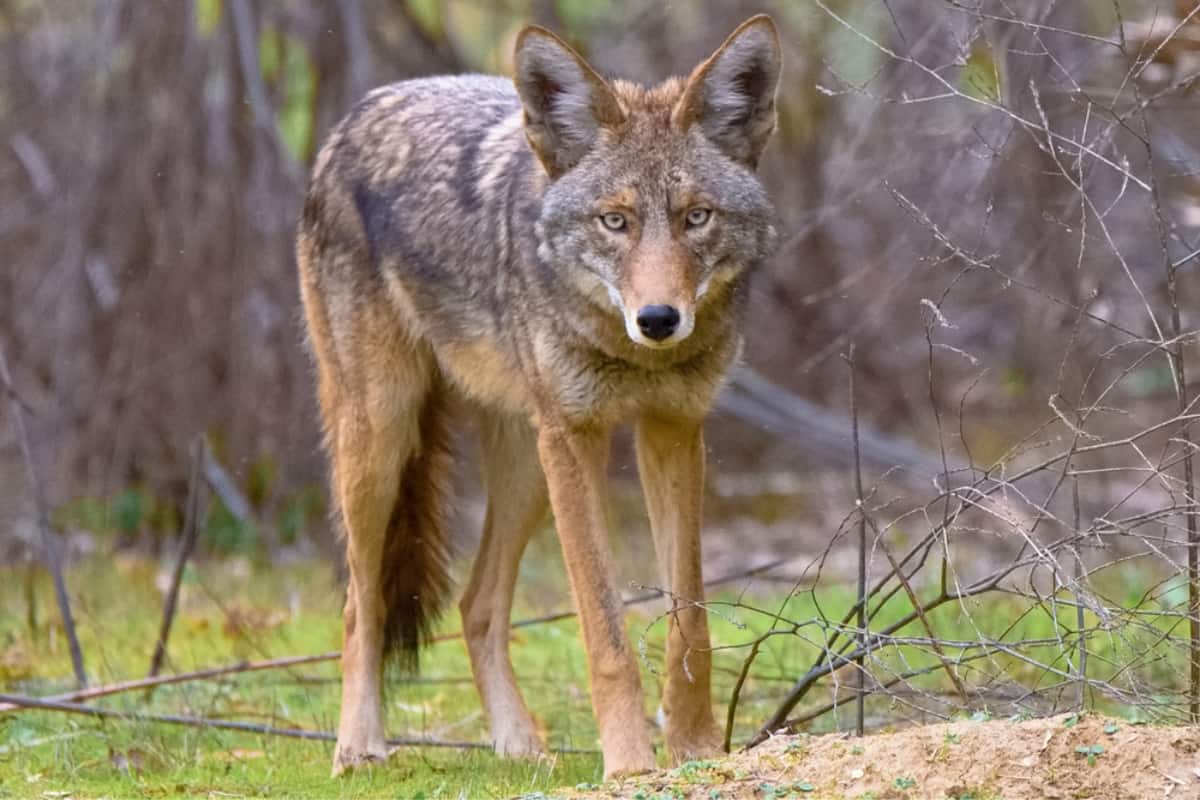
Living with urban coyotes in Oregon, as in many other parts of North America, requires a combination of understanding their behavior, taking precautions to minimize conflicts, and coexisting harmoniously with these wild animals. Here are some guidelines for living with urban coyotes in Oregon:
Learn About Coyote Behavior
Understand that coyotes are naturally shy and wary of humans. They are typically most active during dawn and dusk but can be seen at any time of day or night. Recognize that urban coyotes may have adapted to living in proximity to people but should still be treated as wild animals.
Secure Your Pets
Keep small pets, such as cats and small dogs, indoors or closely supervised when outside. If you have larger dogs, keep them on a leash when walking them, especially in areas where coyotes are known to be present.
Secure Your Property
Secure garbage cans and compost bins to prevent easy access to food sources. Remove fallen fruit from trees, as this can attract coyotes. Do not feed coyotes intentionally. Feeding them can lead to habituation and more human-coyote conflicts.
Coyote-Proof Fencing
Consider installing tall, solid fences around your property, as coyotes are skilled climbers and diggers. Make sure there are no gaps or holes in your fence that coyotes could use to enter your yard.
Supervise Children
Teach children about coyote behavior and safety. Encourage them to never approach or feed coyotes. Supervise children when they are playing outdoors, especially in areas frequented by coyotes.
Haze Coyotes
If you encounter a coyote in your neighborhood, try to scare it away by Making loud noises, such as clapping your hands or yelling, waving your arms and maintaining eye contact, Throwing objects in the direction of the coyote.
Report Problematic Behavior
If you encounter a coyote that displays aggressive or abnormal behavior, such as approaching humans or pets without fear, contact local animal control or wildlife authorities.
Support Coexistence Efforts
Consider getting involved with local wildlife advocacy organizations or community groups that promote coexistence with urban wildlife. These organizations often provide resources and information about living harmoniously with coyotes and other wildlife.
Frequently asked questions
Conclusion
From the lush forests of the west to the open plains of the east, coyotes have found their niche, becoming an integral part of Oregon’s diverse ecosystems. Coyotes play a crucial role in maintaining ecosystem balance. As nature’s pest controllers, they keep rodent populations in check, preventing overgrazing that could harm plant life. Their scavenging habits contribute to the recycling of nutrients and the control of disease spread through carrion.
However, with their adaptability comes the challenge of coexistence in urban areas. As they navigate the borders between wild and developed spaces, understanding their behavior becomes paramount. Responsible actions, like securing pets, proper waste management, and hazing techniques, can foster a harmonious relationship between humans and these wild neighbors.

Izzy is an experienced ranch worker who has a passion for exploring nature and getting up close to wildlife. With her connections to various animal organizations, Izzy is well-versed in animal care and rehabilitation.

